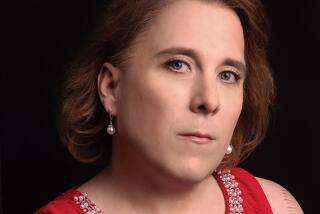A Star Is Reborn in Pasadena : Restoration: The new owner of the 69-year-old Raymond Theatre is faithfully recapturing its former elegance and glory.
The Raymond Theatre--which has sat in darkness and neglect since January--now rings with the sound of workers’ hammers, drills and saws. Sunlight streams through doors thrown wide open and portable spotlights shine everywhere.
The 69-year-old historical structure is being reborn.
Under new owner Gary Folgner, crews have been working for the past three months, frantically readying the building for a Nov. 16 reopening concert.
The frenzied work fulfills a 2-year-old city dream: preservation of the onetime vaudeville house and former movie theater as a premier entertainment venue in Pasadena.
“Everything has come together,” said Claire Bogaard, executive director of Pasadena Heritage, an activist preservation group. “We’re just thrilled.”
Bogaard said some in Pasadena had feared that Folgner would slap a coat of paint on the Raymond and quickly start booking the rock, country and pop acts that perform at his other two clubs. Folgner is owner of the Coach House nightclub in San Juan Capistrano and the Ventura Theatre in Ventura.
Instead, Folgner “seems to be very serious and very serious about doing it right,” Bogaard said of the preservation work. “He’s going to put the windows back, the original marquee back and the original marquee ceiling.”
Ed Razor, Folgner’s project manager for the theater, estimated the restoration will cost $1.5 million. It will continue after the theater opens, perhaps taking years to complete.
It includes uncovering three front windows plastered over years ago and dismantling the late-1940s marquee to uncover the still-intact 1921 marquee enclosed within. Construction of a three-story commercial building on the parking lot next door also is planned, but that, like the major restoration work, is months away.
For now, Folgner wants to replicate the original, classic Beaux Arts style of the interior and begin booking concerts and renting the hall.
Professional groups, such as ballet companies and other performance groups, could use the Raymond when they can’t obtain dates at the Civic Auditorium, can’t fill the Ambassador Auditorium and don’t want to use the area’s college auditoriums, Razor said.
“This is the only real hall available for rent in Pasadena,” he said. “It’s an elegant setting. The hall fills a huge gap.”
Designed by J. Cyril Bennett, architect of Pasadena’s Civic Auditorium and scores of buildings along Colorado Boulevard, the 1,800-seat Raymond opened in 1921 as a vaudeville house. In the 1930s, it was converted to a movie theater. In 1948, it was remodeled as the Crown Theater and lost many of its Beaux Art architectural features to modernization.
Marc Perkins bought the Raymond in 1978 and dubbed it Perkins Palace. Top-name pop acts like Roberta Flack and Air Supply played there, followed later by heavy-metal rock bands.
After it closed four years ago, the Raymond became a hulking money-loser with a leaky roof and pigeons in the rafters. In January, vandals broke in and tore out all of the building’s copper electrical wiring. Perkins soured on concert producing and, with partner Gene Buchanan, sought to convert the Raymond to office space.
But preservationists rallied and city officials persuaded Perkins and Buchanan to delay their plans while a $29,800 economic study was completed on the theater. The study paid off when Folgner, a buyer willing to pay the reported $2.8-million asking price and keep the Raymond operating as a theater, was found.
Before escrow closed on the purchase, Folgner sent crews to begin work: patching holes in the floor, putting new upholstery on the seats, installing missing wiring and replastering and repainting the walls.
Even the basics are being done with historical accuracy, Razor said. On a recent weekday, he walked through the ground-floor obstacle course of tools, scaffolding, lights and workers. He opened a notebook filled with old photos of the Raymond and peered at new paint on the rear orchestra seat walls.
“The whole ambience was very soft and elegant and graceful,” he said, consulting the photo. “Too many ideas have gone in here; too many people have come in here and not considered the ramifications of their changes.”
One change during the 1950s was to rip out an ornate proscenium arch that framed the stage. Fifty feet above the stage, only a length of the arch now remains. But from that fragment, sculptor Hugo Motte will reconstruct the whole, Razor said.
“I have no drawings, no nothing,” said Motte, as he sanded a plaster cast larger than a bathtub. “I’ve had to go basically from scratch.”
Motte, 79, a practitioner of the near-obsolete art of architectural plaster casting, volunteered his skills as a member of Artnet, a grass-roots Pasadena artists association. Other Artnet members, eager to learn the old techniques, have aided Motte.
“In effect, it’s almost a lost art in the United States,” Motte said. “They don’t decorate houses the same way.”
Also being preserved is the original fire curtain, designed to shield the audience from an accidental onstage fire. The curtain, with its painting of an automobile cruising in front of snowy peaks, was given to the theater by the Hull Motor Co., maker of Essex and Hudson cars.
“That’s a source of our biggest trouble,” Razor said, pointing to the curtain. The word “asbestos” is proudly painted on its front, but Razor said the substance now known to be a carcinogen is enclosed tightly within the curtain fibers and is not a hazard.
More problematic, he said, is a Fire Department requirement that the old curtain meet safety standards that call for it to drop automatically instead of manually. Officials haven’t decided how that will be resolved.
But Razor said the Fire Department, the zoning department, Artnet and Pasadena Heritage have all been cooperative, working together to get the Raymond back on its feet.
“Once you spend a lot of time in here, you fall in with it,” he explained. “This is a place where magic happens. It may not look like it now, but it will happen.”
More to Read
The biggest entertainment stories
Get our big stories about Hollywood, film, television, music, arts, culture and more right in your inbox as soon as they publish.
You may occasionally receive promotional content from the Los Angeles Times.






